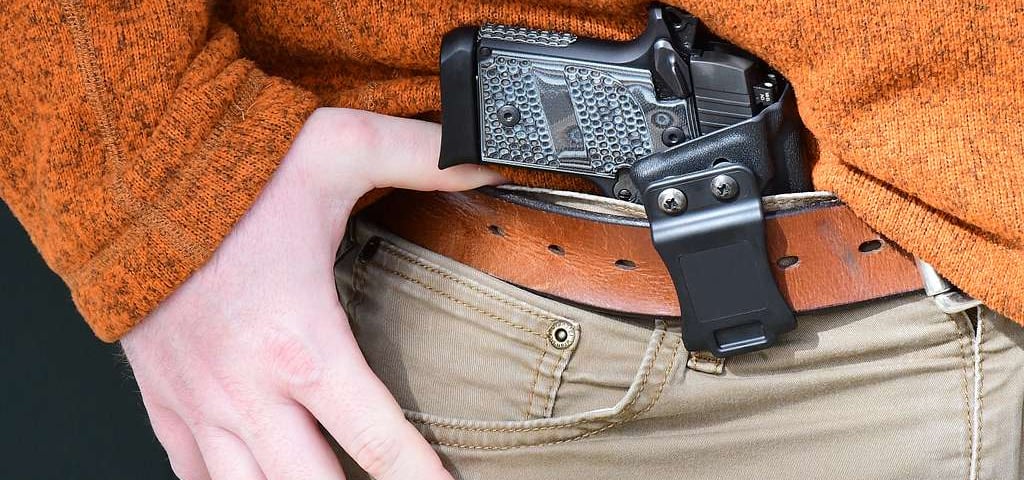Pros and Cons of Appendix Carry for Concealed Carry
Discover the pros and cons of appendix carry for concealed carry. Make an informed choice for your safety and comfort, understanding its benefits and risks.
OPINION
7/19/20233 min read


When it comes to concealed carry, choosing the right carry position is crucial for comfort, accessibility, and overall effectiveness. In recent years, appendix carry has gained popularity as a preferred method. Appendix carry refers to carrying a concealed firearm in the front of the body, typically in the area between the navel and the hip. In this blog post, we will explore the pros and cons of appendix carry, examining its advantages and disadvantages to help you make an informed decision.
Pros of Appendix Carry
Accessibility and Quick Draw
One of the main advantages of appendix carry is its accessibility and quick draw potential. With the firearm positioned in the appendix position, it allows for easy access with the dominant hand. In a self-defense situation, every second counts, and the ability to quickly and efficiently draw your firearm can be critical. Appendix carry facilitates a natural and instinctive draw motion, making it easier to access the firearm swiftly when needed.
Concealment and Discretion
Another benefit of appendix carry is its superior concealment compared to other carry positions. By placing the firearm in the front of the body, appendix carry allows for better control over printing, which is when the outline of the firearm becomes visible through clothing. The natural contours of the body help to hide the presence of the firearm, making it easier to maintain discretion in everyday situations.
Increased Retention
Appendix carry offers an added layer of retention due to the positioning of the firearm. With the firearm placed in front of the body, it is more difficult for someone to attempt a disarm from behind as it remains within the line of sight and control of the carrier. This added retention can provide an additional sense of security, especially in crowded or close-quarter environments.
Comfort for Certain Body Types
Appendix carry can be particularly comfortable for individuals with certain body types. Those with a slimmer build or who have a protruding abdomen may find that carrying at the appendix position distributes the weight of the firearm more evenly. Additionally, the position can be more comfortable for individuals who spend a significant amount of time seated, such as drivers or office workers.
Cons of Appendix Carry
Increased Risk of Negligent Discharges
One of the primary concerns with appendix carry is the potential for negligent discharges. Carrying a firearm in the appendix position places the muzzle in close proximity to vital organs and arteries. This proximity increases the risk of injury in the event of an accidental discharge or a negligent handling of the firearm. It is essential to prioritize proper training, high-quality holsters, and strict adherence to safety protocols to minimize this risk.
Limited Concealment Options
While appendix carry offers excellent concealment, it may not be suitable for all body types or clothing choices. Individuals with larger midsections or those who prefer tighter-fitting clothing may find it challenging to effectively conceal a firearm in the appendix position. Moreover, certain activities or clothing styles, such as bending, sitting, or wearing skirts or dresses, may make appendix carry impractical or uncomfortable.
Potential for Muzzle Sweeping
Appendix carry requires a careful and conscious approach to firearm handling. When reholstering the firearm, there is a risk of inadvertently sweeping the muzzle across the body or other sensitive areas. This can be dangerous and may result in injury. Proper training and discipline are essential to mitigate this risk, but it is a factor that should be taken into consideration.
Limited Access with Non-Dominant Hand
One notable drawback of appendix carry is the limited accessibility with the non-dominant hand. In some self-defense scenarios, the dominant hand may be incapacitated or unavailable. This limitation may hinder the ability to draw the firearm effectively or perform manipulations, such as malfunction clearing or reloading, with the non-dominant hand. It is crucial to train for such scenarios and have contingency plans in place.
Conclusion: Appendix carry has both advantages and disadvantages, and the decision to adopt this carry method should be based on individual preferences, body type, and lifestyle. The accessibility, quick draw potential, superior concealment, and increased retention make it an attractive option for many concealed carriers. However, the increased risk of negligent discharges, limited concealment options, potential for muzzle sweeping, and limited access with the non-dominant hand require careful consideration and strict adherence to safety protocols.
Regardless of the carry method chosen, responsible concealed carry demands proper training, responsible firearm handling, and a high-quality holster. Always consult with experienced instructors, prioritize safety, and choose a carry method that best suits your needs, skill level, and comfort.
Remember, the decision to carry a firearm is a serious one, and responsible concealed carry requires continuous education, practice, and respect for the law. Stay informed, stay safe, and make well-informed choices when it comes to concealed carry and the appendix carry method.
Subscribe newsletter
or Email us at: DerringerDan@Snakebite.com
For Advertising information: 941-876-8332
425 Montague ln. Northport, FL 34287
